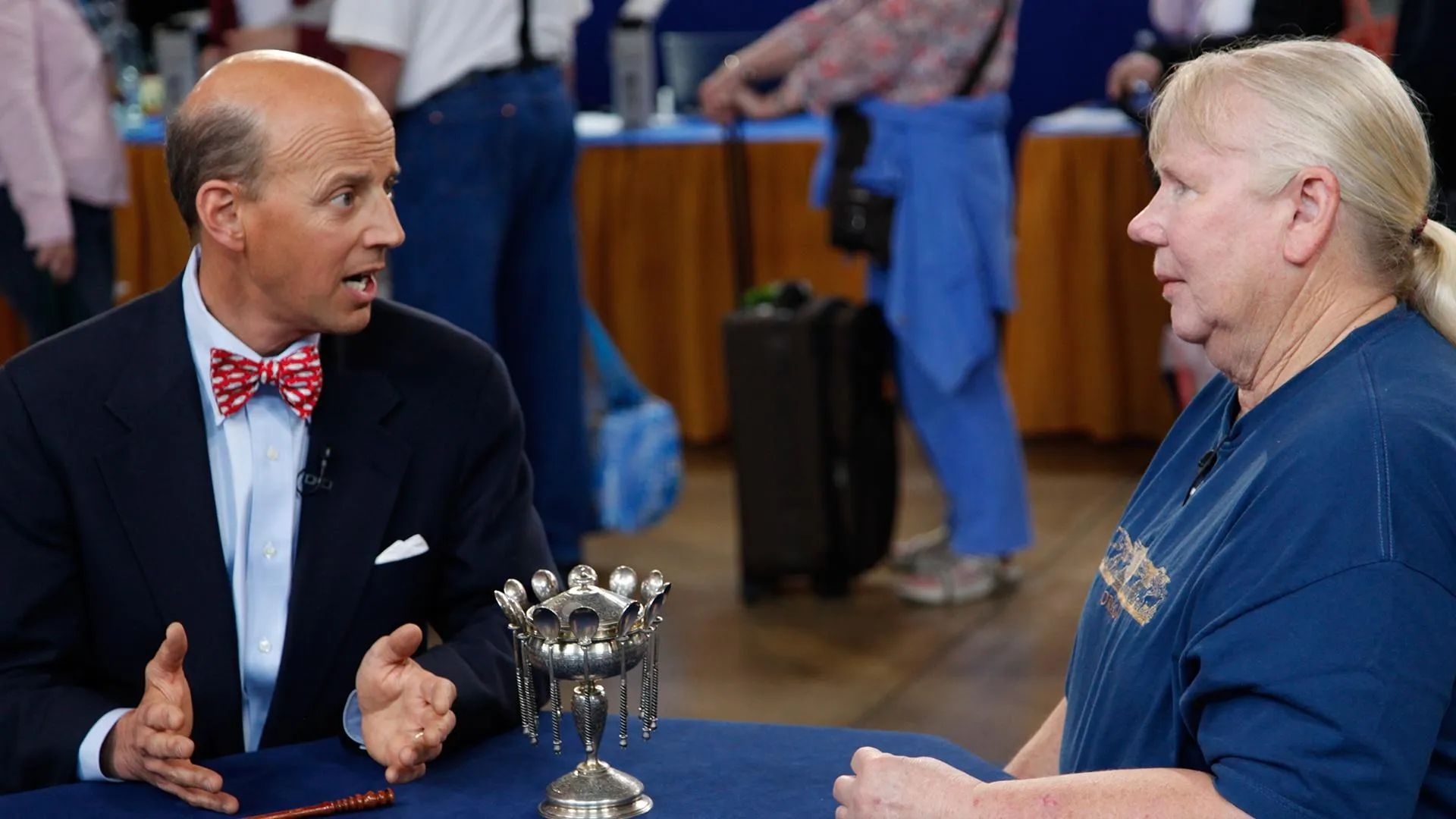GUEST: It belonged to a family friend who did a lot of traveling, and picked it up in his travels, and I saw it at his house one day, thought it was interesting, so he said, "Here, have it."
APPRAISER: Well, what you have is a fantastic example of Amphora Teplitz pottery. It was created in the Turn-Teplitz region of Bohemia. The most famous manufacturer out of there is a company by the name of Reissner, Stellmacher and Kessel. They were founded in 1892. They brought their wares to America for the first time in 1893 at the World's Fair, and were awarded a best-in-show prize. This piece is a little bit later. It's actually after partner Eduard Stellmacher left in 1905. And if we look at the bottom here, we can look at a series of marks, and the most important one is this one in the center, which is an imperial mark. It means that the artisan who did this piece graduated from the Imperial Technical School. Rarely do they have that mark, and it really is a mark of the highest quality. We also have a series of marks that say "Austria" and "Amphora." Those tell us that the piece was made between 1905 and 1910.
GUEST: Okay.
APPRAISER: Its a prime example of Art Nouveau pottery. The form is interesting.
GUEST: Yeah.
APPRAISER: You were struggling with, "What is this?" What we came to is a double-necked ring vase. It's really quite fantastic. The elephant will appeal to elephant collectors. The way that it’s all been done, somebody obviously took great pride in building this. Now, your friend gave it to you.
GUEST: Yep.
APPRAISER: A recent gift, or...
GUEST: Um it was recent. A couple of months ago.
APPRAISER: We see Teplitz-Amphora pottery come up all the time. You never see a piece like this-- this dramatic, this cool. Typically at auction, these pieces sell for between $500, $700 all the time.
GUEST: Okay.
APPRAISER: We have come to the conclusion, it would not surprise us, if this piece brought somewhere between $2,000 and $3,000.
GUEST: Wow. He's probably going to want it back now. (laughing)



